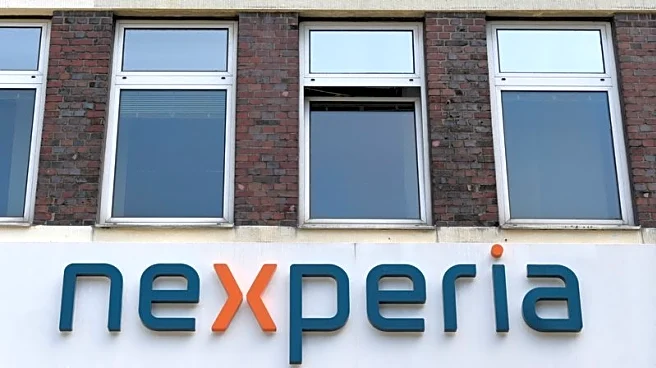What's Happening?
Nine major European banks have announced a collaborative effort to develop a euro-denominated stablecoin. This initiative is intended to bolster Europe's position in the digital asset ecosystem and provide
an alternative to the US-dominated stablecoin market. The consortium includes prominent banks such as UniCredit, ING, and CaixaBank, among others. Supported by Strategy& and PwC, the project aims to create a trusted European payment standard for the digital economy. Despite the dominance of dollar-backed stablecoins like Tether and USDC, the euro stablecoin market remains small, with only $620 million in circulation compared to nearly $300 billion in dollar-backed coins. The new stablecoin is expected to leverage blockchain technology for efficient and transparent digital payments.
Why It's Important?
The development of a euro stablecoin is significant as it represents Europe's strategic move to gain autonomy in the digital payments sector, which is currently dominated by US-based stablecoins. This initiative could potentially reshape the financial landscape by offering a European alternative, thus reducing reliance on US financial instruments. The project also highlights the growing importance of blockchain technology in enhancing payment efficiency and transparency. If successful, this stablecoin could lead to increased competition in the global stablecoin market, potentially influencing monetary policy and financial stability in Europe.
What's Next?
The euro stablecoin is set to launch in the second half of 2026 under the EU's Markets in Crypto-Assets Regulation framework. The venture will be managed by a Netherlands-based company, licensed and supervised by the Dutch Central Bank. As the project progresses, it will be crucial to monitor the regulatory environment and the adoption rate of the stablecoin. The initiative may face challenges from existing non-bank stablecoin issuers and skepticism from entities like the European Central Bank, which has expressed concerns about the impact of cryptocurrencies on monetary policy.
Beyond the Headlines
The launch of a euro stablecoin could have broader implications for the global financial system, potentially leading to increased scrutiny and regulation of stablecoins. It may also prompt other regions to develop their own digital currencies, further diversifying the global digital asset landscape. The initiative underscores the importance of collaboration among banks to establish industry-wide standards in digital payments, which could drive innovation and efficiency in financial markets.













